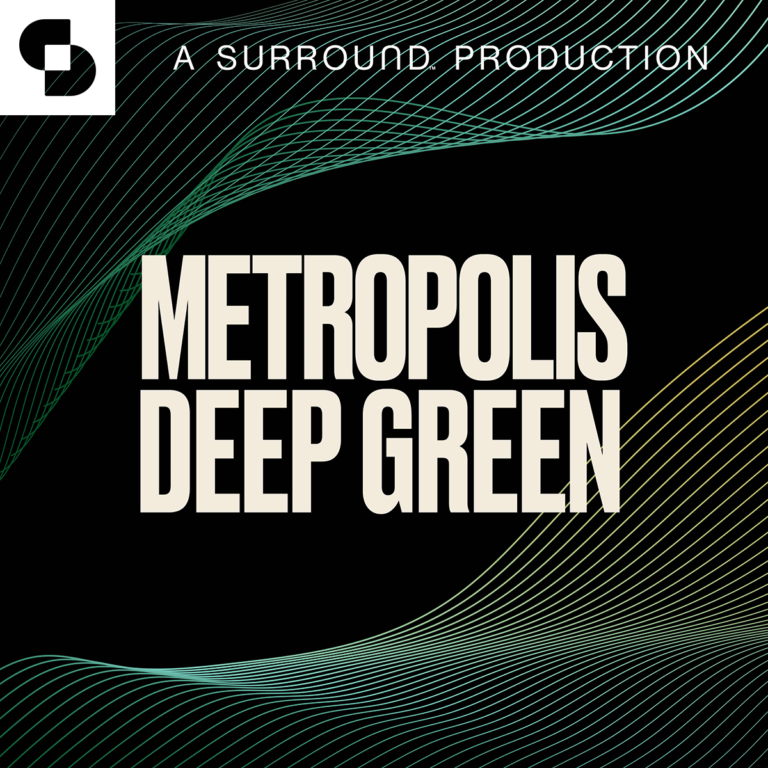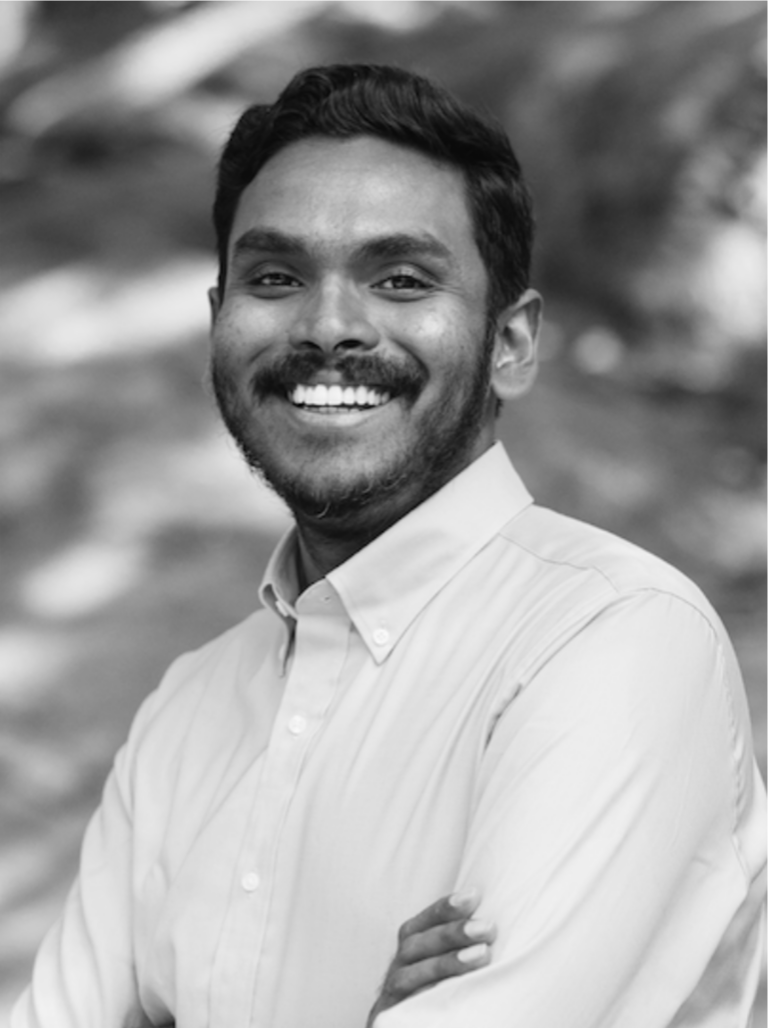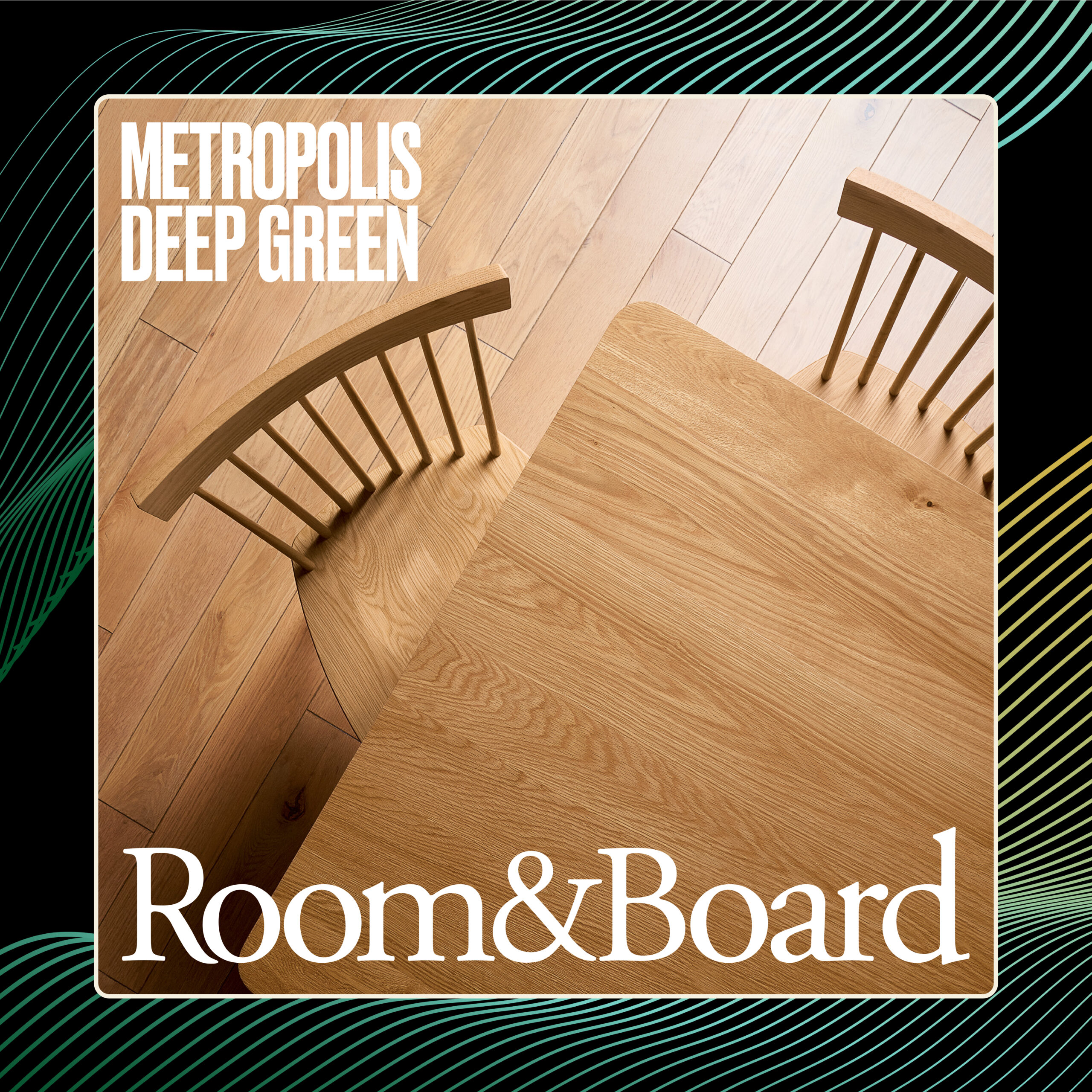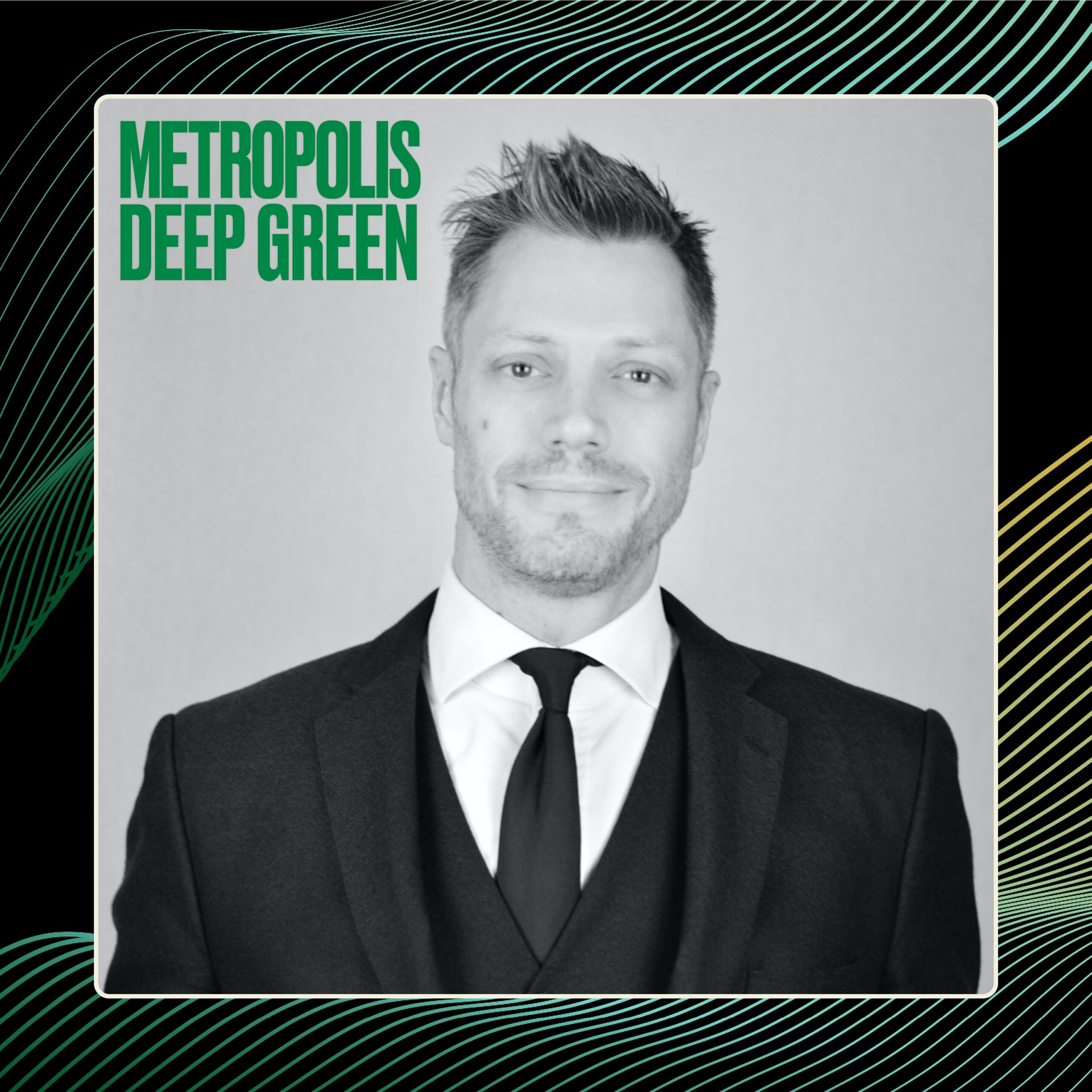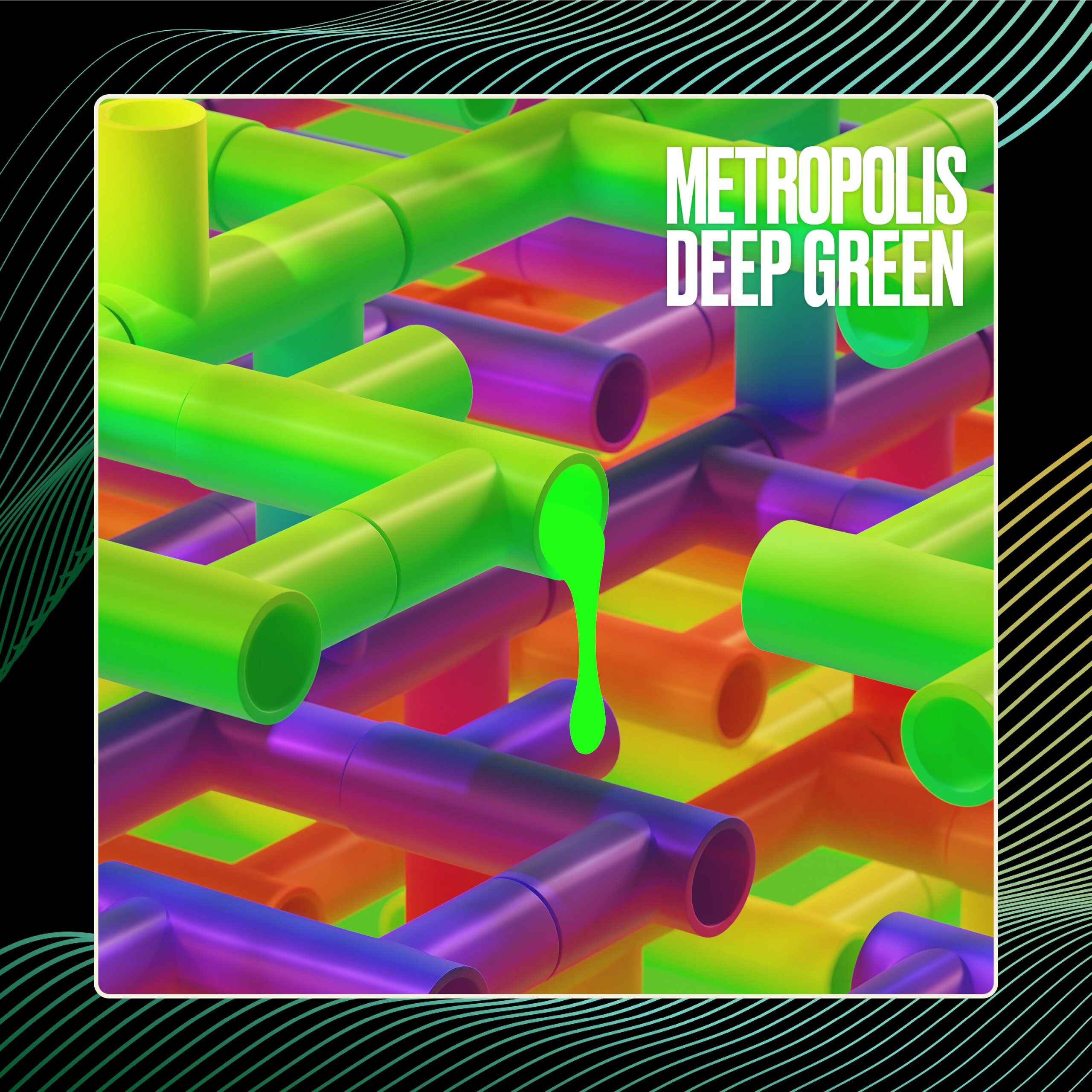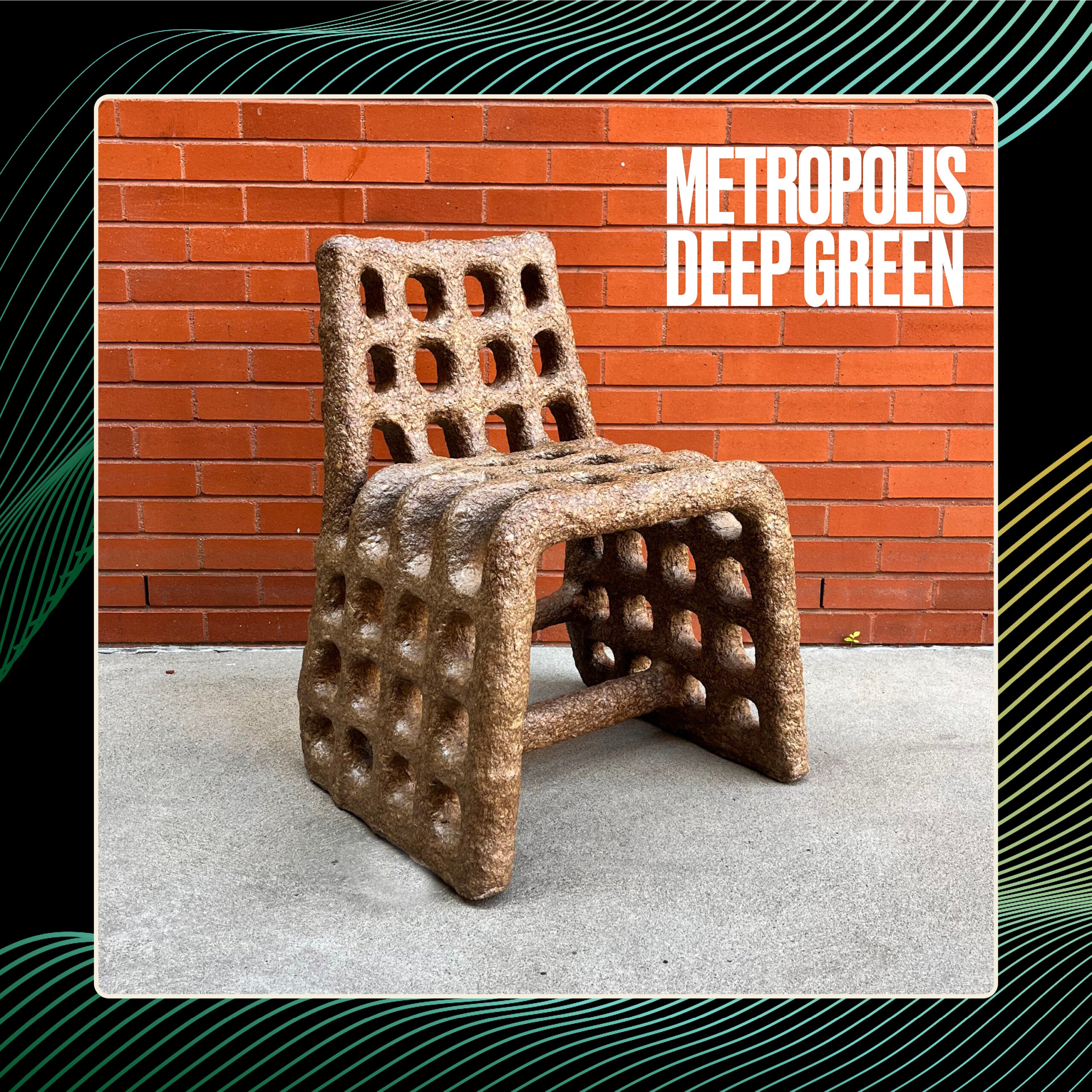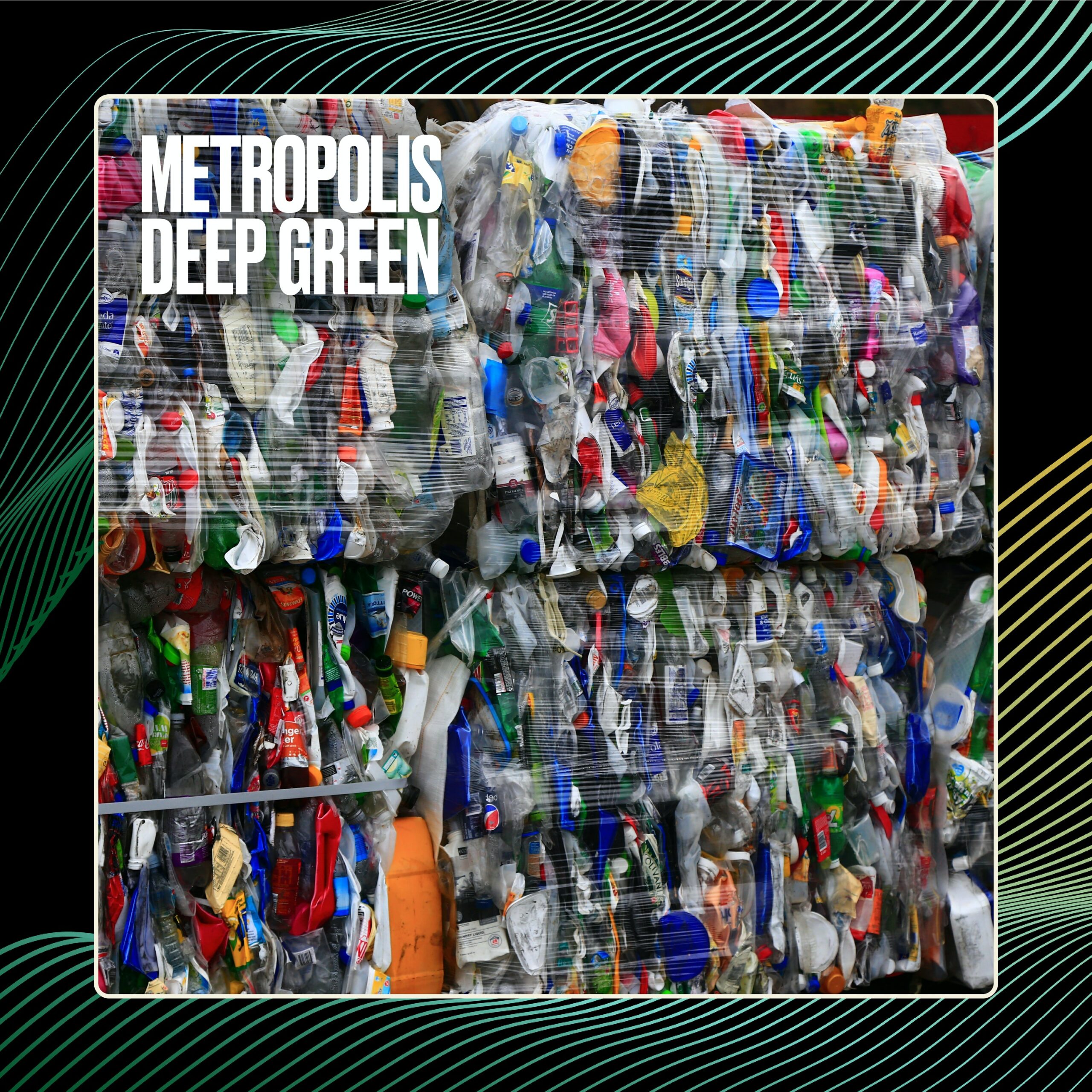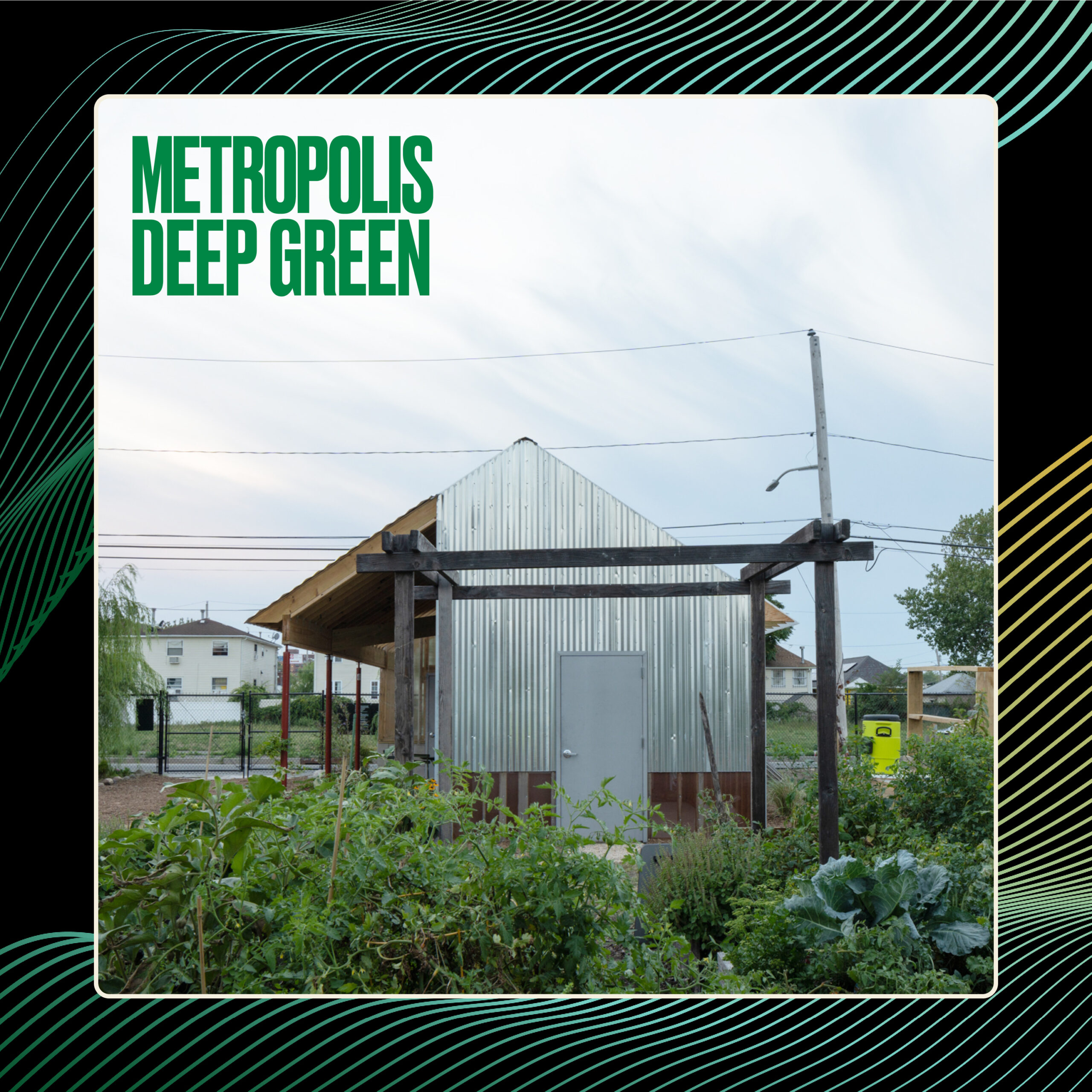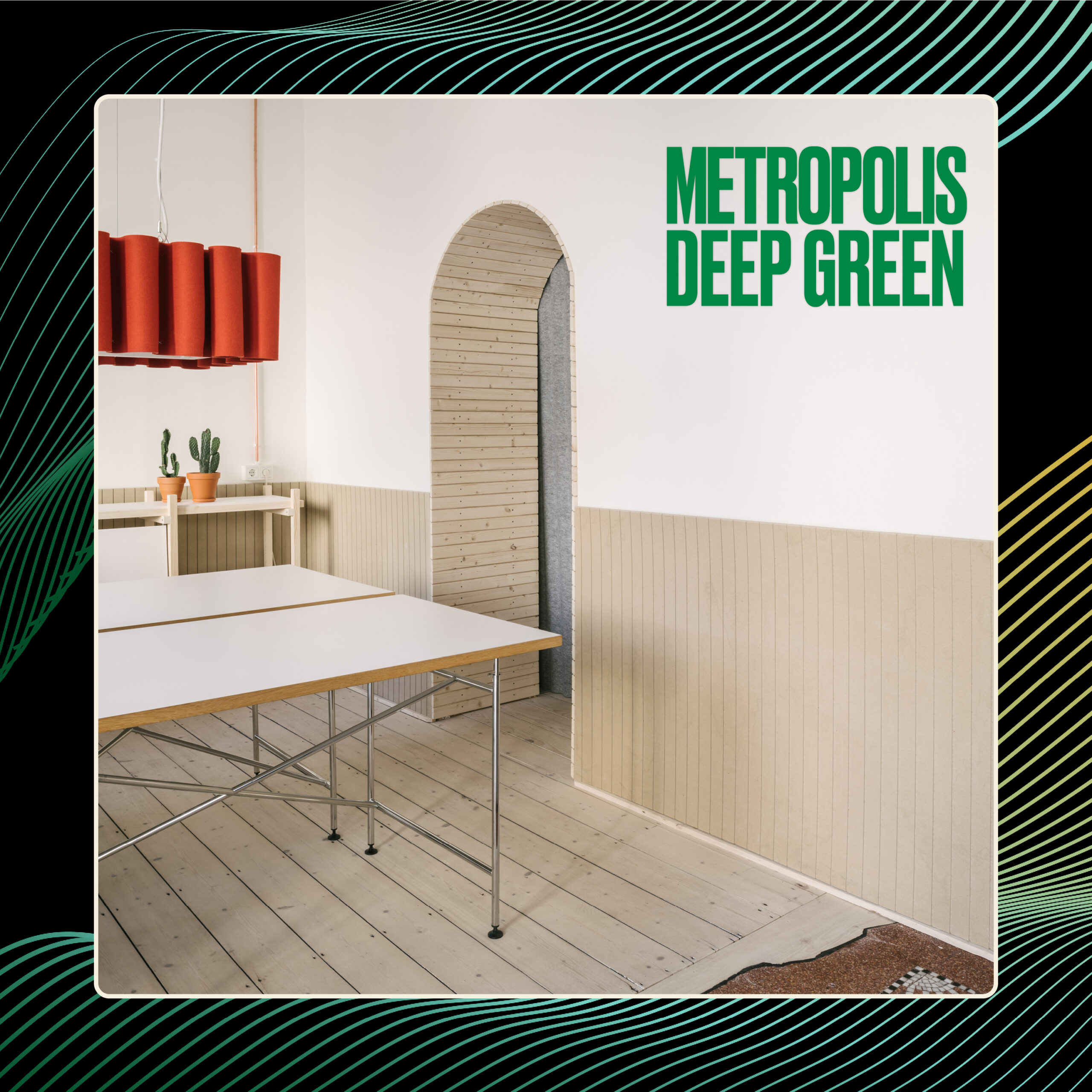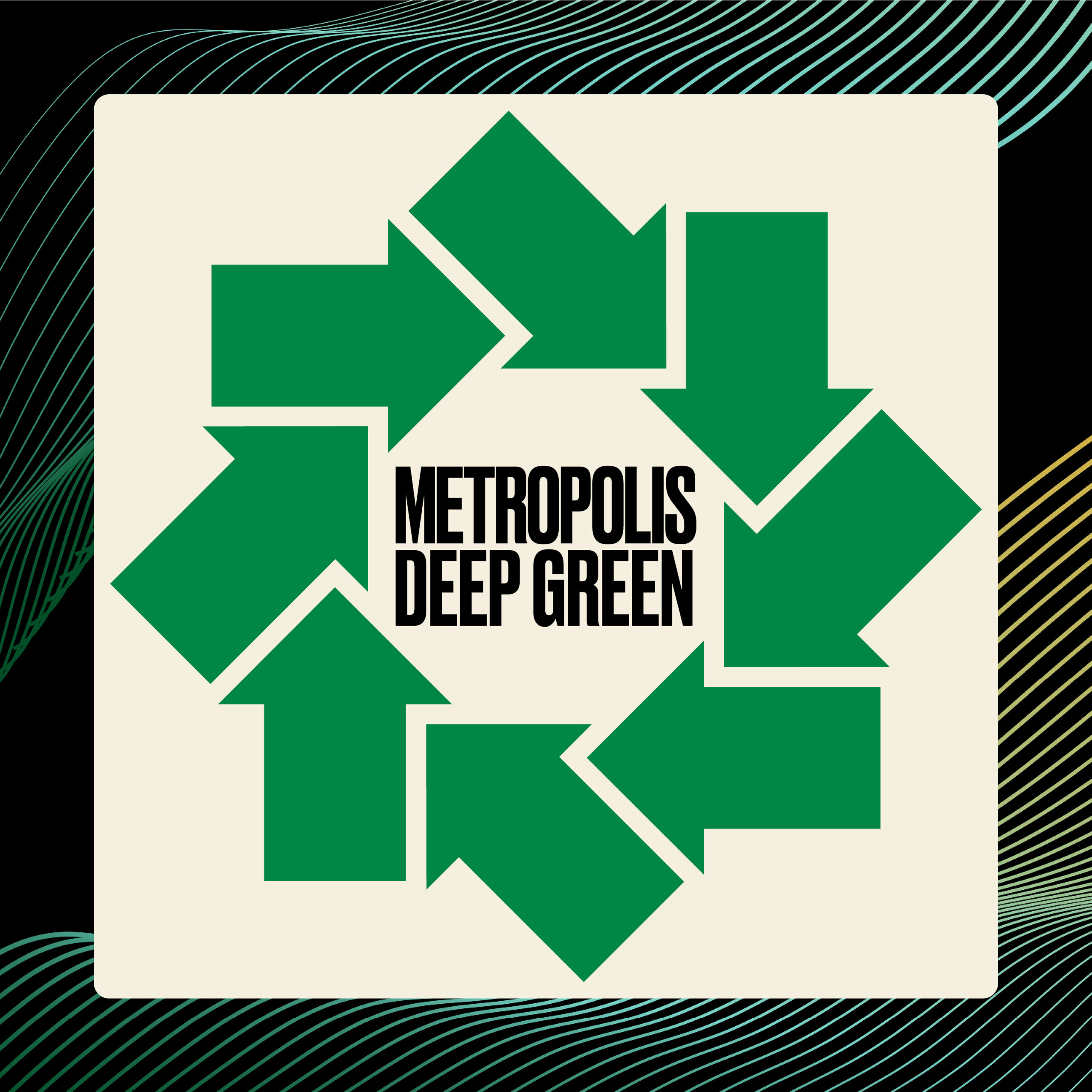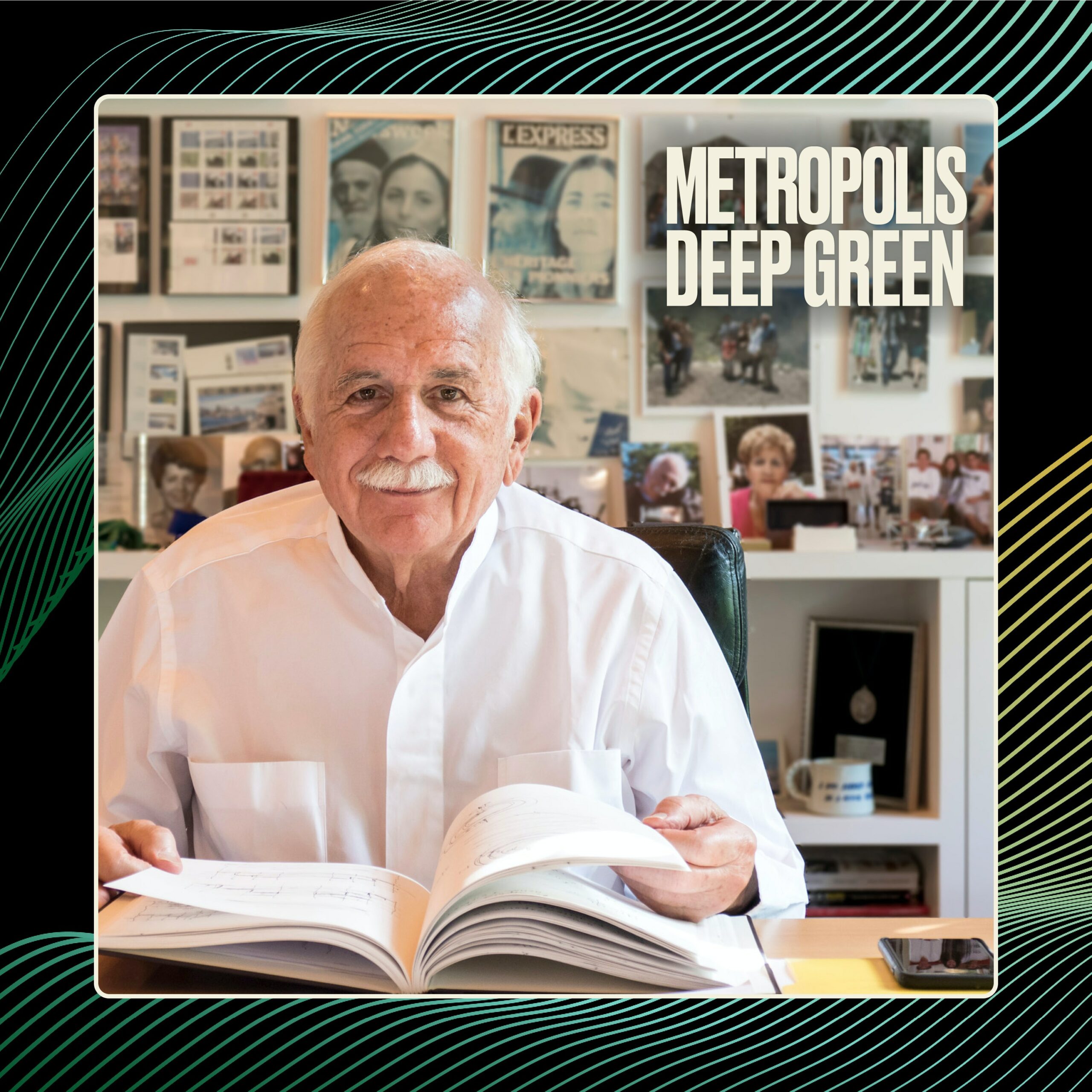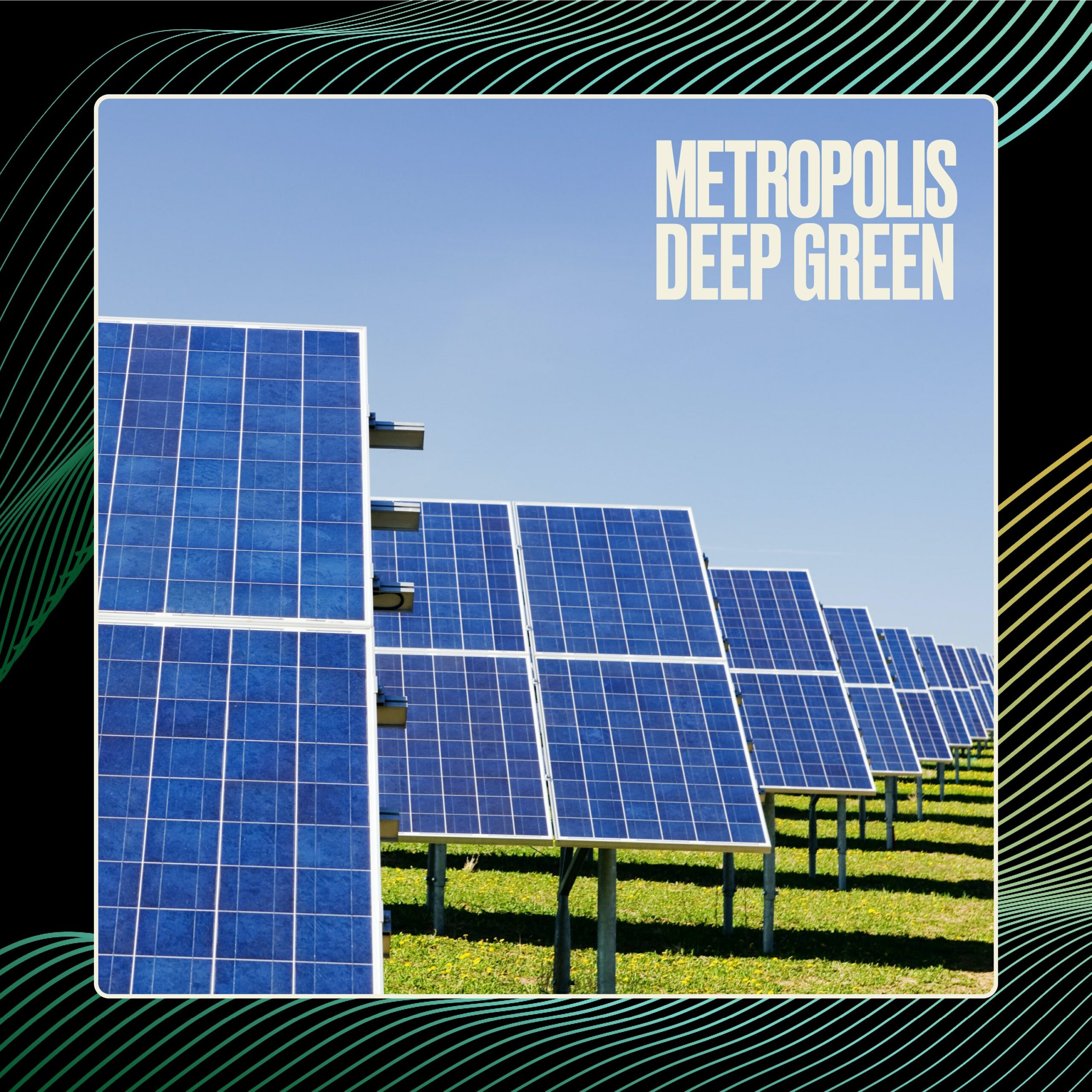In this inspiring episode, host Avi Rajagopal is joined by Paola Antonelli, the senior curator of architecture and design at the Museum of Modern Art and the museum’s first director of research and development. Together, they explore the transformative power of design in addressing critical global issues and the various projects Antonelli has been involved in, such as the 2019 Triennale di Milano exhibition “Broken Nature,” the MoMa salon series, and her collaboration with Alice Rawsthorn “Design Emergency.”
Through these many platforms, Antonelli hopes to create community, foster awareness, and catalyze change. In her discussion with Rajagopal, she emphasizes design’s role in society and power beyond mere decoration. They reflect on the pandemic and why it was such a watershed moment for the creative community, and look to the future with hope that we can design a better legacy.
Moments to check out:
- Exploring the Impact of Design During the 2020 Pandemic (starts at 3:54)
- Do you think of yourself as an optimist, even having accepted the reality of the end of our species? (starts at 24:45)
Connect with our host Avi Rajagopal on LinkedIn!
Discover more shows from SURROUND at surroundpodcasts.com. This episode of Barriers to Entry was produced and edited by SANDOW Design Group. Special thanks to the podcast production team: Wize Grazette, Hannah Viti, Samantha Sager and Rob Schulte.
Although the transcription is largely accurate, in some cases it is incomplete or inaccurate due to inaudible passages or transcription errors.
Avi Rajagopal: [00:00:00] Welcome to Deep Green, a show about how the built environment impacts climate change and equity. Deep Green is brought to you by Metropolis. I’m your host, Avi Rajagopal. We have a special episode for you today, the third in a series of three conversations with thinkers and doers who are pioneering new ways of thinking about sustainability, health, and equity.
My guest today is Paula Antonelli, the senior curator of Architecture and Design, and the director of Research and Development at New York’s Museum of Modern Art. Paula speaks with deep optimism about design’s, role in times of crisis and emergency, and about how design solutions have a way of redefining the problem.
Our conversation was conducted in front of a live audience at [00:01:00] Pen one in New York City. If you want to discover more of Metropolis perspectives on sustainability, head on over to metropolis mag.com. Paula, thank you so much for joining us today. Thank
Paola Antonelli: you, Abby.
Avi Rajagopal: You know, Paula has a way of framing some of the most difficult and wicked questions that we face as humanity through the lens of design, and I found through our work often shifts the problems, gives us new perspectives, and makes the power of design accessible, I think, to audiences. Who may have not encountered the work of designers or may not have recognized design in all its forms before, and that work has always been amazing.
In today’s talk, Paula’s gonna talk about three recent projects of hers. The first is the 2019 show, Brooke and Nature, which was at the In Milano [00:02:00] and also then at the Museum of Modern Art. I think by far, in my estimation, the best. Exhibition about design in the last decade. Woo. Um, thank you. You know, just an incredible provocation about not just the place of designers in the world, but also the relationships between these artificially constructed categories of the manmade world and the natural world.
Just incredible, absolutely incredible. As part of her role as the director of r and d, Paula also started up a salon series at MoMA, and they take up all kinds of questions, including anger and silence. Most recently, web 3.0 I think was the last one, and she brings together a group of people to think through those topics.
And so she’s gonna you to that today as well. And the last piece that she’s going to talk about today is a platform that she’s created with Troon called Design Emergency, and it’s really about creative solutions to crises. It’s a book. It’s an Instagram account, it’s a [00:03:00] podcast. It lives in many different forms and I think enables us to see design in places that maybe we’ve never expected to encounter design before.
Thank you all so much again for joining us today over
Paola Antonelli: to Paula. Thank you, Avi. Thank you. Thank you, and good afternoon to everyone. Indeed. You know, this was a great presentation because really it framed. What I want to achieve in life, which is that of making as many people as possible understand the importance of design and the power of design.
Too many people think that it’s embellishment, that it’s decoration, and it is that, and that’s important, but it’s also changing behaviors. It’s about really steering the world using that button still fuller quote that talked about trim tabs that are the just little, little wings that are under gigantic ship.
One of them does nothing but hundreds of them really steer the ship in a different direction. So that’s what I always think about. And design emergency was really that. [00:04:00] Design emergency was born during the lockdown in 2020 in April. Alice Rothstern is a sublime design critic and one of my best friends.
And for really many years we’ve worked together on conferences, but never created something together. And my husband and I were locked down on Broadway and Walker and Larry was every night watching Fat Joe, the hip hop artist doing his own Instagram lives with people. And so he said, Hey, have you ever thought of doing this?
And I’m like, oh, what a good idea. Let me call Alice. So, In three days, we had a title and we had also a logo thanks to our wonderful friend Fri Kerr, who’s a Subline designer, and we were off to the races and we started by interviewing people and designers that had something to do with the pandemic, ranging from the.
Illustrators at the C D C at the Center for Disease Control that were responsible for giving the Covid 19 [00:05:00] virus its brand, because that’s what a real Covid virus looks like. It’s that glob with little dots that make a Corona crown around it. They are the one that made it into this deep water mine, scary as hell.
Raiser that really went all over the world and gave the pandemic its own image. So we started with her Alyssa Eckert. Well, we also interviewed and covered episodes of design, like the cover of the New York Times, the day that United States reached a hundred thousand victims. And for the, on first time in history, the front page of the New York Times was only text only names of people.
These are all examples of design that people might not think about as design. We even interviewed an anesthesiologist in Bologna, Italy, that were designed together with a few colleagues, the ventilator, the split ventilator valve. You remember that at some point there were attempt to put more than one person on a [00:06:00] ventilator because there was a shortage of the machines, and next to it also the New Zealand B B D O Agency.
Person responsible for the campaign of awareness in New Zealand, which Alice and I deemed to be the best that we had seen. So you see all these different facets all presented to as many people as possible. Of course, we started out with only a few design of aficionado, but then it extended and after we saw that the pandemic, or at least we started hoping that the pandemic would not be the focus of the world anymore, but there would be other.
Foci, we decided to speak to designers and architects that are trying to make the world a better place in general. And these are two examples of two architects that we interviewed in the spring of 2021. One is you see it on the right out of China, who designs for rural communities this idea of reviving rural communities.
And on the left hand side instead is DEU Daniel [00:07:00] out of Carala in India and Southern India that designs using waste. Just as Gandhi taught, which is to try and make every building with whatever materials you find within a five mile radius. So you see, we keep on seeking these examples of design that really tries to make a difference.
We talked about the Great Great Wall of Africa, which is from the Atlantic Ocean until the Indian Ocean 21 countries trying to create. A ribbon of greenery at the southern side of the Sahel Desert in order to actually change the climate and replace what’s been taken away with the deforestation of the Amazon Forest.
So we go from the very small to the cosmics to the planetary, and we try to show how diverse design is. We try also to do some special episodes every March 8th. We do a hidden heroines of design and we try to highlight the role of [00:08:00] women in design and also in other cases, you know, we’ve done a series of specials on the Ukraine War, always showing what design can do.
In this case, it’s a classic of many invasions. When designers change the indications that road signs and send armies. To the wrong destination. And that was done copiously also in Ukraine at the beginning. And then there was, for instance, this cover of The Economist, this front cover of the Economist, also from 2022.
So you see all these different forms of design are a way to give a different portrait of design to the world and to hopefully show that design is not just cute chairs. Another project that I did not so recently in 2013, but it kind of connects with design emergency, and it’s a project called Design and Violin.
It was prompted by the release of the 3D printed gun. Sadly timely as a [00:09:00] discussion because just a few weeks ago I saw that there are so many of these illegal and untraceable guns in the United States that are made not with metal, but rather with plastics. But this was the first instance in which open source files were released on the internet to print a lethal gun with a decent 3D printer at home, a gun that can really be lethal.
And I remember when it came out. I was so stunned because all of a sudden it says if we say Italy, a prosciutto was lifted from my eyes and I saw the truth for the first time, and that is that design is not always benign. So I remember I started this project together with Jamer Hunt, who is a great thinker and colleague to try and understand.
The ramifications of design and the manifestations of violence in contemporary society by focusing on objects that have an ambiguous relationship with violence, such as, for instance, the anti pirate water cannon that [00:10:00] was deployed in the outside of the Somali and uh, Sudanese coasts a few years ago, to deter pirate boats from getting onto ships, you know, violent but protected at the same time, or the technicals.
The Toyota four by four that was introduced as a utilitarian vehicle for farmers and has become the car of narco traffickers and gorillas all over the world. So design can go wrong like any other aspect of human nature. This was proposed as an exhibition to MoMA. MoMA, understandably, decided that it was not necessarily Art Museum Fair, so we migrated it online.
And online we had the opportunity to also ask questions of our viewers, something that we couldn’t have done in the galleries. And I gotta tell you, it was so interesting. The questions were tough, like, you know, is euthanasia a form of violence or a form of compassion? Or is execution always ugly? I mean, really [00:11:00] provocative questions and the responses from the public were really priceless and so important.
You can still see the website if you want. It’s frozen, so we don’t accept comments anymore, but it still is very valuable. So you just go MoMA design and violence, and you can find it. Once again, a different way to talk about design. And then Avi spoke to you about broken nature. Broken Nature was at the Triana of Milan, which is the I’m from Milan.
I started my career there. It was an incredibly emotional, beautiful, and intense experience because Milanese loved design, so it was filled with citizens, not with designers and people from our industry. So it was a chance really to have a public discourse and a public conversation. To the point that at that time it was 2019, there were the kids that were following RTA, Thunberg and having the Fridays for the future.
They would meet in the exhibition and start marching from there. So that was amazing. Broken Nature was based on the idea that we will become [00:12:00] extinct as a species. That’s a fact. We have some control over the, when. And we have a lot of control over the, how so we might as well try and design a better legacy so we won’t be remembered as complete morons.
And that’s what the exhibition was about. It was about giving many, many strategies. You know, at that time there were the sustainable development goals. But you know, when you see something like this as a citizen, your eyes might glaze over as an institution you might follow. But as a citizen it’s, it’s harder to understand.
It needs to be translated instead into strategies. I’m not saying that these symbols are more readable, but they kind of condense the show. It was a way to translate the sustainable dev sustainability development goals and just very simply being responsible into many different strategies. Of course, recycling, of course, reusing, but also in some cases what our grandmothers.
Taught us one, you buy a coat and you keep it for life. And two, you eat [00:13:00] every part of everything that is in front of you. So from common sense to use as a new technologies, various ways to be a responsible citizen and to really make one’s efforts count. So these are views of the exhibition because what’s important also in my opinion, is to change behaviors, not by teaching and by preaching, but rather by showing examples that are delightful and that very simply make responsibility desirable and a good option.
These are examples of the exhibitions and you see. This is by Bernie Kraus, who’s an Ian. He is somebody that spent his life after doing the all the sound effects for Apocalypse Now. He just went all over the world, just recording nature and very high fidelity. And then he worked with these visualizations designers from London to visualize this soundscape from nature.
Also at a distance of a few years. So [00:14:00] you could see that some frequencies corresponding to some animals that had become extinct were missing. So there you go. Various strategies to make people understand our plight. The truth is everything that we do as designers, as curators is political because living together is politics.
That is why, you know, Avi mentioned this, MoMA R and d salons, they were born in 2008. Because I had a chip on my shoulder against the financial sector, and I kind of took it as an advantage that the financial sector had ruined the world that year. So I said, okay, this is our opportunity as the cultural sector to show that we can be the r and d of society.
And you know, I’ve been at MoMA 29 years. I love museums. I know that museums can have a role in society. I wanted to show that museums can be citizens and responsible citizens by gathering. People that are around the museums, artists, curators, but then also [00:15:00] journalists and scientists to talk about matters that range from death to truth to, as Abby just mentioned, web 3.0.
But I do believe that it’s important to always remember that whenever we do something public, just like putting out a magazine, we’re engaged in a political act. And design is politics. I exhort all of you to go see this fabulous show. That is Epic Cooper. She right now, WB Du Bois was a sociologist and a illustrator and graphic designer from the last century.
Dan did these amazing visualization designs that illustrated this sational of black people in the United States. At the beginning of the century to try and show that once again, it was not all about being working class, but in some cases there was education either received or given, and there was a whole context that people didn’t know about.
Designers, politics, or once again, if you get closer to us from. And [00:16:00] top the AIDS Coalition 20 Dish Power in 1987 for AIDS or Black Panther Newspaper in the seventies, or much more recently in 2020. The Brooklyn Trans Liberation Poster by Mohammed faas. There’s a lot of overt politics that can be deployed and also some subtle one cuz even video games can be political ask.
There’s right now an exhibition at MoMA, if you wanna go see it called Never Alone. That gathers. The video games that we have collected at moment the past 10 years, and it shows that there are video games like this war of Mine where the gamer, instead of being a sheeter is a civilian trying to survive in a city under siege, very timely.
Or this one on the right hand side where the player is a border agent that needs to decide on the spot whether to give asylum to some petitioners or not. So you see, design is so much and. I consider it my mission to try and [00:17:00] show all of its facets and to also try and show how powerful it could be as an agent of change to make the world a better place.
And today we spoke only about humans, but also for all other species. So I’ll stop here and I’ll have a good conversation with Ian and with Abby. I’m with you now. Thank you very much.
Avi Rajagopal: Deep Green will be back after a short commercial break.
Thank you so much, Paula. That was absolutely fantastic. Paula, let’s start with the title of the talk of this case. Let’s talk about design emergency. You said you came up with a name in three days. What is special about design during an emergency? You know, what was it that drew you? To this idea of design at times of emergency.
Actually, it’s the love
Paola Antonelli: that it [00:18:00] took three days. The name took about 20 minutes or less. It really came quite quickly for a very simple reason. Design is life. It’s about life. This is not a platitude. It’s very real as you know. So every time there is an emergency, that emergency is also design emergency, and it can be tackled.
Of course, design doesn’t solve everything and does not change the world alone, but it’s a very important ingredient. You know, many years ago I started thinking that design is really the enzyme that allows things to happen. Progress change revolutions, right? So it really connects. People in their lives with whatever is going on in more macro systems.
So for that reason, every emergency is a design emergency. And since there’s always an emergency or go, there’s always a design emergency.
Avi Rajagopal: I, it’s really a felt like we’re always living in emergency in the last few years. Why do you think the pandemic has been such a watershed moment [00:19:00] for design? You know, Apart from some of the obvious questions about the spaces we live in and quality of air and things like that, which I know are important, but it seems to me that like especially looking at it through the lens of your book, which I highly recommend to everyone, if you haven’t taken a look at Design Emergency or haven’t been listening to the podcast, absolutely fantastic.
Can you give us a sense of how you feel given the view you have of design across the world? While this pandemic has been such a watershed moment,
Paola Antonelli: well, I don’t have to tell you all. I mean, this is the one experience that we’ve all had and that we can all still feel in our stomach unless we were born during the lockdown.
It was a watershed for everyone because. It was like I’m hitting the brakes and you know, some people crashed and others like were able to stop. But I don’t even know how to speak about the pandemic without saying platitudes. But the truth is we all [00:20:00] shifted mode of operation. In a second. All of a sudden we were home in the span of 24 hours.
And I think that change prompted us to rethink everything that we were doing from how we dealt with our children, to how we dealt with death, with mourning, with love. People broke up, others instead were closer. So I think that a moment of reckoning like that is hard to think of. And global reckoning, like, you know, there was nobody that was out.
So I think the designers are really in. Fired, but by difficult moments. And we just came back from the San, the Mob in Milan, which is your design people. So you know, it’s a big mess. It’s like a week, and it’s based on the furniture industry. So the original prompt was a trade fair, but of course now it has become this big event that is all over the city and encompasses also other forms of design.
It was so much better this year in a way. This was the first [00:21:00] salon after the pandemic, and it was so much better. The furniture was great, okay, but the non-specifically furniture projects were so filled with idealism and with a sense of foreboding or a sense of like progress. It really felt that. It was a moment of rebirth also for design.
And I think it’s natural designers are intrinsically constructive people, right? So it’s part of the D n a. So I would say that any moment of restart is perfect.
Certainly
Avi Rajagopal: from our point of view at Mcclar, it feels like there’s a greater sense of urgency and a greater acknowledgement of the climate, Texas, of environmental degradation, but also of the connections of that with social justice, with inequity.
This idea of environmental justice that’s become, I know so mainstream now, it seems like the pandemic. In [00:22:00] a way they were shot. The, beyond some of the things you were discussing in growth in nature, pre pandemic, right. How does the experience of design emergency reflect back on growth in nature? How do you see people thinking about ecological crises, socioecological crises, now aware of the
Paola Antonelli: pandemic, the funny thing, the pandemic, if anything.
Brought back an exhibition that I did in 2001 that makes me laugh. That was called Work Spheres. It was about new ways of working. And it’s funny because all the issues that we’re discussing today, remote work and everything else were the same. Only at that time it was only audio instead of video. And it’s really funny.
It’s the same. No, I would say that. The pandemic. Also, remember it’s been three years, and in three years a lot can happen and I feel that a new generation of design, not only designers but also engineers or thinkers, has blossomed. That is the generation that [00:23:00] really, the Gen Z, that really believes in the emergency that is happening in doing something about it.
Just last Saturday there was this conference here in New York that is organized by my Coli, Beatrice Gile, that was called the World Around, and she. Put together a competition for young climate thinkers this year, under 25. They’re fantastic. I mean, they had 300 submissions then they had, they selected a few, they had mentors.
So that’s what’s happening. Also, you know, some designers from the nineties that were very innovative and very decorative are becoming old, and the new designers that are coming up are a completely different breed and have different priorities.
Avi Rajagopal: Right. You know, when you did grow up in nature, and you mentioned this idea here as well, that we’re on such a path of degradation, but even if we were not right, even if we were not, the reality is that the human species will be extinct someday.
That [00:24:00] we have this anthropocentric view of the world where you think we’re gonna be, you know, the norms and babies of this planet for. You know, forever. And of course that’s not true. And one of the, I think, very beautiful publications of Broken Nature was if we were to become extinct, what is the legacy we are leaving behind on this planet?
Right. You said, you know, hopefully the next dominant species doesn’t think that we’re morons. But at the same time, when I hear you talk about, you know, this work with the world around, or you know, talk about design emergency, there’s also in the sense of hope, And this optimism. So, I mean, I’m gonna ask you an obvious question, but do you think of yourself as an optimist, even having accepted the reality of the end of our species?
Paola Antonelli: Definitely. But you know, I’m a designer or an architect by training. So what designers love is to have. Limits, and within those limits they thrive. So you need a [00:25:00] compression and a slight imprisonment to be able to really thrive. So by knowing that we will become extinct and that hope is the last to die, but it dies, I’m gonna do the best I can within it.
So I consider myself an optimist, but you know, it’s. In Italy. I remember when I came up with this when I was talking about extinction. People were like, oh my God, you’re such a pessimist. I’m like, quite the opposite. Here is an exhibition, great example of thriving creativity, generosity and passion, and hey, this is beautiful.
This is optimism. I’m telling you that we can be great until we are extinct.
Avi Rajagopal: Because of that sense of optimism. Also, I think sometimes in our day-to-day work, and not just designers, but as journalists and writers and engineers and data scientists, no matter what you do, it’s easy to get caught in the [00:26:00] day-to-day actions of your work and to forget what you and Michaels are today, that all design is political, that there’s no such thing as a interaction.
How do we as creative individual roles keep that sense alive? How do we know that none of our aesthetic choices are made Just because they may be, women are aware of the context and they’re made, but they’re made the context and there is a political significance to everything we do. How do you, how do you convey that to your exhibitions and to your projects, to all these things you do?
Because it seems like a central idea of yours.
Paola Antonelli: It, I mean, I just got back from Milan, solar jet lagged, and we were saying how beautiful it is when you’re jet lagged because you’re like, Slightly high without the drugs and that kind of distance, or how can I say, a slight obfuscation puts everything in focus [00:27:00] weirdly, right?
So I always try when I do exhibitions to swipe people away a little. You know, and it’s like when you watch a movie that takes you somewhere where you haven’t been and therefore is able to deliver a message more deeply. Same thing with an exhibition. You have to make people forget their lives, the anxiety outside and focus, but without feeling compressed or obliged.
Right? So it’s very subtle, but exhibitions are Liz Sen. They are. Theatrical stages, and it’s very important to design them that way. At least design exhibitions, art exhibitions are different because people already come with that sense of like, I have to watch the art show. So it’s almost like they make the sign of the cross where they come in that it’s different.
Instead, design, it really has to be an experience that makes people forget the rest, and that [00:28:00] way you can have some real epiphanies also as a viewer.
Avi Rajagopal: I think the, the thing that may not be so visible to the general public or people who are peripherally aware of your work, it’s not so much, it’s not even so much the exhibition, but I’ve seen you over and over build platforms for engagement.
And build communities around the topics. Okay. I remember the website for Broken Nature. I remember the design environ violence example. You know, where you opened up the topic of exhibition to public comment and amazing discussions that came out of that. And then you did that again, which you were in nature.
There was a almost a year long sort of engagement process before the exhibition even started. You do this over and over again. You build both communities of like-minded people, but also then reflect that into the larger [00:29:00] public. Tell us about why you think that’s an important, especially when we’re talking about kind of work that’s covered in broken nature and design emergency, um, projects that, you know, have the potential to change our world.
Why is it so important for you to build community and to build public engagement?
Paola Antonelli: When a curator has an idea for an exhibition, a thematic show, right, with a message, I think that. They of course want to deliver that message in any way possible, and the gallery is only one of the possible locations.
Sometimes I don’t even get a gallery cuz the work, the project gets rejected. But there are so many other ways and I feel it’s very important to be creative also with all the platforms that we have at our disposal. Proposal. Right. So Design Emergency was born and continues on. Instagram was Instagram night night.
It’s a podcast design and violence was supposed to be an exhibition. It was not an exhibition. So we started a WordPress site, just [00:30:00] doing it by ourselves. It’s just this yearning. But also there’s the public programs like we did an exhibition called I Intends, there was about 111 items of clothing that had a strong impact on the world in the best at 150 years.
And we did a program that I loved and I will do again, I hope that’s called the aby. Meaning that we had 26 presentations from A to Z each seven minutes, and each, it went from air, Nike Air. So we had a great designer Tinker Hatfield, talking about that. Two T was the turtleneck and Z was the zipper. So we went through all of them.
Right? R was Rana Plaza and it’s the 10th anniversary, so it’s good to remember also in the people that died there, so that then, you know, for design and violence, we had Oxford style debates in which two debaters would fight with a moderator. The first one we had Cody Wilson, the guy that invented the 3D printed gun.
So we also [00:31:00] try. To have people that are not necessarily part of our milieu, but this is, this makes my work so much more interesting. It gives me a chance to say more, publish more, make other people be recognized. And altogether, you know, I, I think it really. Uh, instead of being just this exhibition, especially in a place like MoMA where you can’t touch anything and you are there to take the vitamins of Matisse and Picasso, and then luckily you stumble upon the design show, but still you don’t have the kind of visceral engagement and instead you can have it when you have more people around and there are different formats.
I don’t know how many of you, when, when you were children you didn’t like to sleep in bed and so sometimes you would sleep on the bench, in the kitchen or on the terrace. I mean, it’s kind of normal, right? You know, it’s, uh, to try new formats and I feel it’s the same for also for an exhibition. Absolutely.
Avi Rajagopal: And I think quite, it sounds obvious to say, [00:32:00] not that he had said it, but you know, it’s such a fundamental. We, we are, think about how we engage with the world intellectually, right? We, we play new frames, new perspectives, something fresh and even if it’s not quite a great fit, right?
Paola Antonelli: Yeah. It’s, yes.
Avi Rajagopal: Okay, great.
We’ll open up to, to be, you have.
Hi everyone. This is Avi Rajagopal, editor-in-Chief Metropolis and the host of Deep Green. I hope you’ve had a great time listening to these last three special episodes, our conversations with sustainability pioneers, John Wolfing, Sharon Prince and Paula Antonelli. We have some really exciting content coming up for you in just a few weeks.
In early August, we’re gonna have a new slate of deep green episodes for you and each of them, as usual, tackles a really interesting topic [00:33:00] from multiple perspectives, digging into unique developments. Just to give you a small taste, we’re gonna talk about the new interest in solar energy and specifically community solar projects, ways in which urban design and community activism are coming together to create energy equity for people.
Communities are able to invest in their own solar facilities and control their own energy production. Maybe for the first time, it seems like a dream, but it’s happening right here in my backyard, in Sunset Park in New York City. Also coming up is a conversation about biophilia with the renowned architect, Mosha ti known of course for bringing vegetation and greenery into some of the most dramatic and beautiful spaces around the world.
Softy has been integrating nature and architecture for many decades now, and he really presents a unique perspective on the value of biophilia in the future of the built environment. [00:34:00] Also coming up is a conversation with Katie Kerly at David Baker Architects about whether sustainability must remain the domain of those with privilege and economic prosperity.
We’re gonna talk about whether affordable sustainability is a realistic and achievable goal. As Katie has found out in her own projects, many of them affordable housing, the way we think about sustainability when we’re dealing with tight budgets and site constraints might be a little different than how we think about it on some of the more expansive projects we’re used to.
And as a special treat, we have a deep conversation about public benefit. Private enterprise and investment, urban design, and of course, sustainability and equity. With AIA Gold Medal winner, Karos Barney. Carol and I spoke at the Merchandise Mart in Chicago during NeoCon, which is of course one of the largest gatherings for the commercial interior design industry here in the United [00:35:00] States.
In addition to this amazing conversation with Carol, we also were able to undertake a wonderful set of initiatives at NeoCon. We hosted a sustainability lab. Where we were able to showcase products that make a difference for people and planet, where we were able to bring together some of the associations in our industry in design and manufacturing and architecture to have a conversation about the future of interior design in light of our goals for designing for climate, health and equity.
We do a lot here at Metropolis to make sure that the architecture and interior design professions can keep its focus on the impact we make on communities and on ecosystems. All of our content is available, of course, on our website, metropolis mac.com, in videos at design tv by sand out.com. As well, of course on Deep Green, our podcast on surround podcasts.com.
We have lots of great content for you across all our channels, and of course right here on Deep [00:36:00] Green available wherever you get your podcasts.
Deep Green is a proud member of the Surround podcast network. Discover more shows from [email protected]. This episode of Deep Green was produced and edited by Standout Design Group. Special thanks to the podcast production team, Hannah Vidi, wise Chrisette and Samantha Seger. The 2023 season of Deep Green will be available shortly wherever you get your podcasts.[00:37:00]

